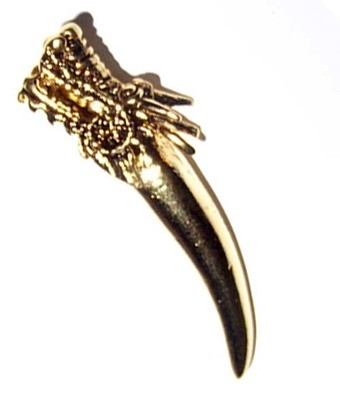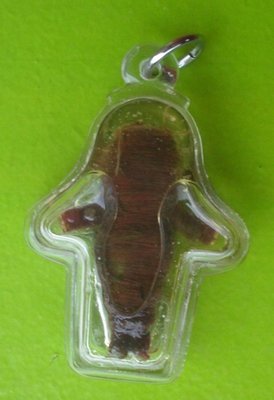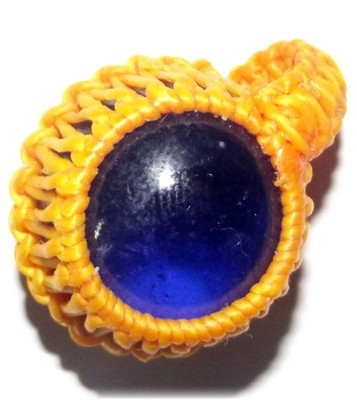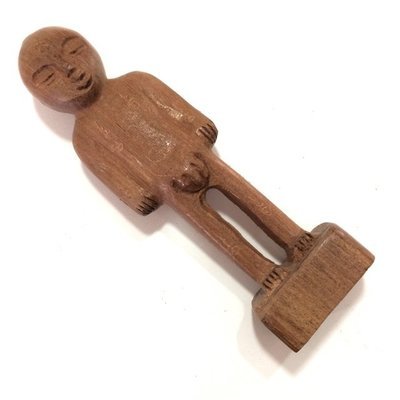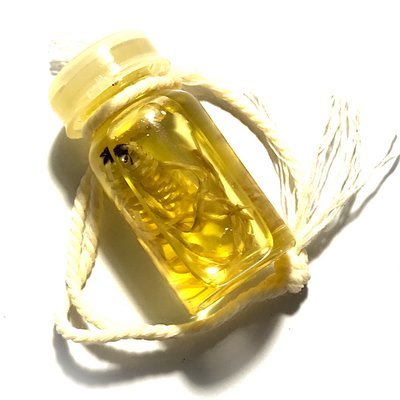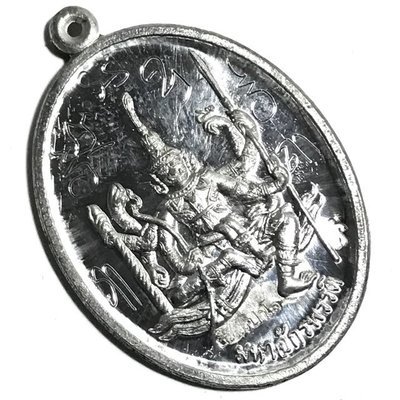

Thailand Amulets
Thai Buddhist and Magical amulets for Wealth, Health, Love and Happiness.
Vast Selection of Amulets
We have a vast selection of over 4000 different kinds of Sacred Amulets and Bucha Items, including Buddha Image, Loi Ongk statuettes, Buddhist Monk Coin Amulets, Takrut Charms, Nam Man Prai Oils, Mai Kroo Wands, Mitmor Ritual Knife, Lek Lai Kaya Siddhi Elemental Substance, Kumarn Tong, Gambling Amulets, Mae Nang Prai, Muan Sarn Sacred Powder Amulets, Palad Khik, Animist Charms, Necromantic Amulets, Buddhist, Animist, Brahman and Necromantic Amulets.
Oros Mangorn Sawan Paya Gilen- Celestial Qilin Son of the Dragon - Nuea Tong Daeng Hlang Yant - Luang Phu Bpun - Wat Ban Sangkh 2556 BE
Oros Mangorn Sawan Paya Gilen (Qilin) Son of a Dragon, King Qilin Lion Dog amulet in 'Nuea Tong Daeng (sacred copper alloy), with Yantra Spells on rear face - Luang Phu Bpun - Wat Ban Sangkh (Roi Et)
Hand made spell inscriptions have been performed on the surface of the front face of the Amulet by Luang Phu using his Hlek Jarn sacred inscription instrument, Who is one of the direct still living Masters who received teachings from the great Luang Phu Mun.
The Oros Mangorn Sawan Paya Gilen, is a Mythical Himapant Animal and a deity Denizen of the Celestial Realms. The Gilen, or, 'Qilin' Chinese Lion-Dog-Dragon, is a Magical Animal that is very Similar in Function to the Paetch Payatorn Animist Deva, and has both Maha Sanaeh, and Kong Grapan Invincibility Powers, as well as Maha Lap Lucky Magick
The Qílín (Chinese: 麒麟; pinyin: qílín) is a mythical hooved chimerical creature known in Chinese and other East Asian cultures, said to appear with the imminent arrival or passing of a sage or illustrious ruler. It is a good omen thought to occasion prosperity or serenity. It is often depicted with what looks like fire all over its body.
The earliest references to the qilin are in the 5th century BC Zuo Zhuan.The qilin made appearances in a variety of subsequent Chinese works of history and fiction, such as Feng Shen Bang. Emperor Wu of Han apparently captured a live qilin in 122 BC, although Sima Qian was skeptical of this>. In legend, the qilin became a stylized representation of the giraffe in the Ming Dynasty.
The identification of the qilin with giraffes began after Zheng He's voyage to East Africa (landing, among other places, in modern-day Somalia). The Ming Dynasty bought giraffes from the Somali merchants along with zebras, incense, and various other exotic animals. Zheng He's fleet brought back two giraffes to Nanjing, and they were referred to as "qilins". The Emperor proclaimed the giraffes magical creatures, whose capture signaled the greatness of his power.
The identification between the qilin and the giraffe is supported by some attributes of the qilin, including its vegetarianism and quiet nature. Its reputed ability to "walk on grass without disturbing it" may be related to the giraffe's long, thin legs. Also the qilin is described as having antlers like a deer and scales like a dragon or fish; since the giraffe has horn-like "ossicones" on its head and a tessellated coat pattern that looks like scales it is easy to draw an analogy between the two creatures.
The identification of qilin with giraffes has had lasting influence: even today, the same word is used for the mythical animal and the giraffe in both Korean and Japanese. The Qilin may be described or depicted in a variety of ways.Qilin generally have Chinese dragon-like features. Most notably their heads, eyes with thick eyelashes, manes that always flow upward and beards. The body is fully or partially scaled and often shaped like an ox, deer, or horse. Always shown with cloven hooves.
In modern times, the depictions of qilin have often fused with the Western concept of unicorns. The Chinese dragon has antlers, so it is most common to see Qilin with antlers. Dragons in China are also most commonly depicted as golden, therefore the most common depictions of qilin are also golden, but are not limited to just gold, and can be any color of the rainbow, multicolored, and various colors of fur or hide.
The qilin are depicted throughout a wide range of Chinese art also with parts of their bodies on fire, but not always. Sometimes they have feathery features or decorations, fluffy curly tufts of hair like Ming Dynasty horse art on various parts of the legs from fetlocks to upper legs, or even with decorative fish-like fins as decorative embellishments, or carp fish whiskers, or even carp fish-like dragon scales. Qilin are often depicted as somewhat bejeweled, or as brilliant as jewels themselves, like Chinese dragons.
They are often associated in colors with the elements, precious metals, stars, and gem stones. But, qilin can also be earthy and modest browns or earth-tones. It is said their auspicious voice sounds like the tinkling of bells, chimes, and the wind. According to Taoist mythology, although they can look fearsome, qilin only punish the wicked, thus there are several variations of court trials and judgements based on qilin divinely knowing whether a defendant was good or evil, and guilty or innocent, in ancient lore and stories.
The Thai Gilen
In Thailand, the Qílín is known as 'Gilen' (Thai; กิเลน), and is a member of the Pantheon of Thai Himapant Forest Mythical Animals. It is most probable that the Gilen was introduced into the Pantheon unbder the Influence of the Tai Yai who came down from China's South to settle in Siam in Ancient Times, and the Legend was probably incorporated into the Himapant Legends of Siam in this manner.
The Gilen is a mixture of various animals, whhich come from differing elemental environments, representing Elemental Magickal Forces Present within each Personified Creature. Many of the Himapant Animals actually represent Gods and Devas of the Celestial Realms, and Bodhisattvas, who manifest as personifications which represent the true nature of each creature Deity through the symbolism of the various body parts amalgamated into the design of the Mythical creature. In Buddhist influenced depictions, they will refuse to walk upon grass for fear of harming a single blade, and thus are often depicted walking upon the clouds or the water. As they are divine and peaceful creature, their diets do not include flesh. They take great care when they walk to never tread on a living creature, and appear only in areas ruled by a wise and benevolent leader, which can include a household.
They can become fierce if a pure person is threatened by a malicious one, spouting flames from their mouths and exercising other fearsome powers that vary from story to story. Legends tell that qilin have appeared in the garden of the legendary Huangdi and in the capital of Emperor Yao. Both events bore testimony to the benevolent nature of the rulers. It has been told in legends that the birth of the great sage Confucius was foretold by the arrival of a qilin. Qilin are thought to be a symbol of luck, good omens, protection, prosperity, success, and longevity by the Chinese. Qilin are also a symbol of fertility, and often depicted in decorations as bringing a baby to a family.
Qilin (麒麟) is often translated into English as "unicorn" as it can sometimes be depicted as having a single horn, although this is misleading as qilin may also be depicted as having two horns. A separate word (simplified Chinese: 独角兽; traditional Chinese: 獨角獸; pinyin: Dújiǎoshòu) is used in Chinese for "unicorns". A number of different Chinese mythical creatures can be depicted with a single horn, and a qilin, even if depicted with one horn, would be called a "one-horned qilin" in Chinese, not a "unicorn". It is because of the whimsical, supernatural, mythical, mystical, and religious similarities in antiquity to the Western unicorns that the Chinese government minted coins in silver and gold several times depicting both the qilin and the Western Unicorn together.
Luang Phu Bpun Tammabalo
Luang Phu Bpun is an Isan Master who has practiced Tudong Forest wandering since his young days as a Samanera, and still practices the Tudong forest path to this day in his old age. A Master of Wicha Akom, he received many Wicha from his Dhammayut Masters. He is a living inheritor of various Wicha of Great masters, including Luang Phu Man Puratto, Ajarn Fan Ajaro, Luang Phu Tet, Luang Phu Phang, Luang Phu Hwaen of Wat Doi Mae Pang, Luang Phu Si, Luang Phu Dun, and Luang Phu Khaw of Wat Tham Glong Plae.
As Luang Phu was wandering on Tudong (solitary forest travelling) 30 to 40 years ago, the local folk came to ask him for 'Khong Dee' (magic amulets), and Luang Phu grabbed some straw from the field he was standing beside, and wrapped them into the form of a human body, chanting the Kata Akarn 32 to bring life into it, and invoke a Hun Payont that never sleeps, to guard over and help its owner. This became Luang Phus most famous specialty, and now 40 years later he is one of the older surviving Masters of the Wicha Hun Payont, coming from a Master Lineage that is second to none.
The Hun payont of LP Bpun has caused many stories of success and strange events, to support the belief in their effectivity, for example the fact that a motorcycle was stolen and then returned to the owner within a week by the thieves, who then ran away, and that this did not happen to just one person, but in fact, has happened on 8 separate occasions till now as far as reports flowing back to the temple can show..
Another Devotee caught a thief stealing his car. The thief told that he got the door open and sat in the car, but then he saw a person sat next to him in the car and fell into shock and was paralyzed, the owner of the car awoke to his cries and caught him. The same devotee claims to have used it to play lotteries and got repeated multiple wins.
A Malaysian Devotee took the Hun Payont of Luang Por Bpun to figh against some Islamic Black Magic, which he had been suffering terribly with its power, and the Hun Payont vanquished the curse after many other attempts had failed..
A Professional Gambler from Hong Kong went to frequent his favorite Casinos, and had so much consecutive success in all the houses, that he was given the nickname of 'He who wins as if he is cheating, but does not cheat'.
Thailand Amulets' owner, Ajarn Spencer Littlewood, is a Family relative of Luang Phu Bpun, and during Ajarn Spencer's time as a Buddhist Monk, he was able to be lucky enough to perform a central house pillar blessing in Duo with Luang Phu Bpun, learning the Wicha for Blessing and Empowering the Foundations of a Newly Built House.
Ajarn Spencer's experience and intimacy with this Great Master Guru Monk, was enough for Ajarn Spencer to notice easily the true power and Wicha of this Experienced and Humble old Master Guru Monk of Tudong Forest Tradition. For this reason, that we are sure of his abilities, Luang Phu Bpun is one of our preferred and recommended Masters for Powerful Amulets. A most highly respected old Master of the Luang Phu Mun Lineage.
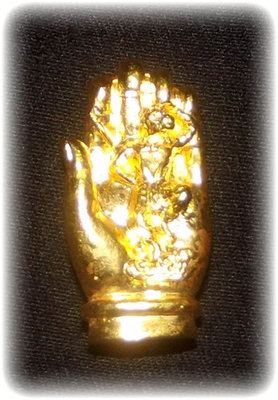
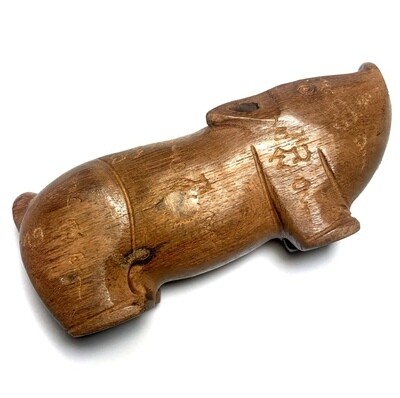
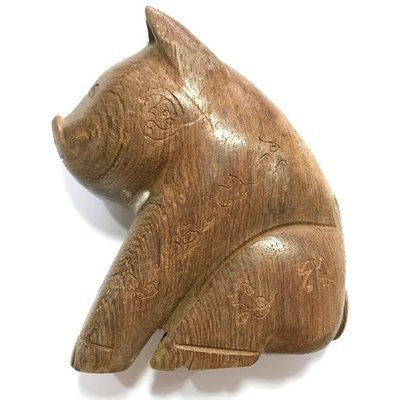
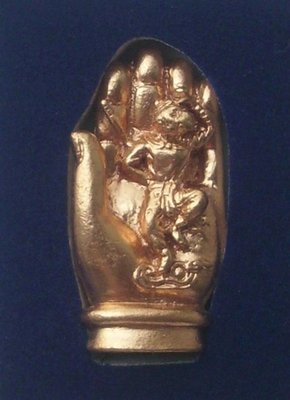
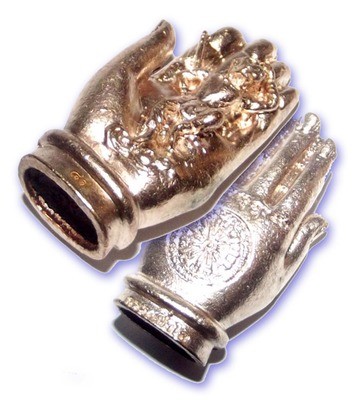
Contact Us
Follow Us on Youtube
About Us
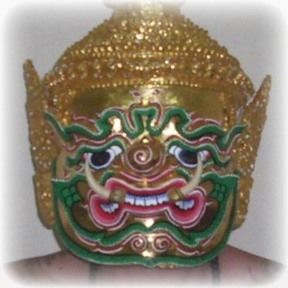
Ajarn Spencer
Proprietor
Thailand Amulets is owned and Administrated by Thai Occult and Amulet expert, Ajarn Spencer Littlewood who guarantees only authentic blessed amulets, and a free gift with every order, as well as his safe delivery or money back guarantee. https://facebook.com/ajarnspencer




















